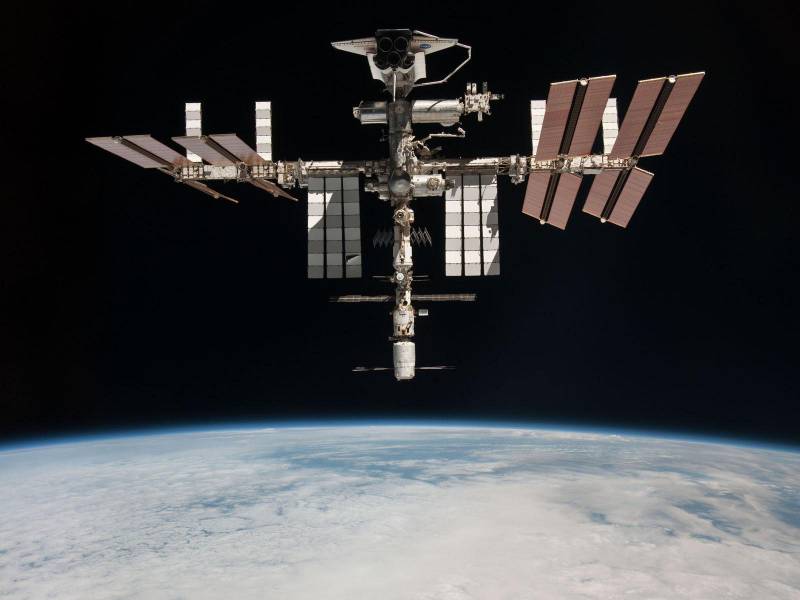ISS (ISS) It can be equipped with a laser system for the destruction of small debris, RIA Novosti reported by the Chair of the Council on space threats to the expert group, Corresponding Member of Russian Academy of Sciences Boris Shustov.

Now evasive maneuvers are carried out to protect the ISS from space debris, produced by the engine of the station or the docked her cargo ships.
On the 60th anniversary of the first satellite in space research Institute passed session workgroup, where scientists from Italy, France, Japan and Russia have agreed to, that international cooperation will be formed. All of them will think of using orbital lasers, stationed on the ISS, to avoid a collision with a small, a few centimeters, but the most numerous and therefore the most dangerous fragments of space debris, Shustov said at a meeting of the RAS Council on Space.
In turn, the President of the Russian Academy of Sciences Alexander Sergeyev, that the question of the use of lasers for the treatment of low-Earth orbit space debris has been discussed for a long time.
Recently, a very popular is to discuss the use of existing lasers from space debris from the deflection elements to the orbits of their attention to the atmosphere. Now Japan and Europe seriously discussed projects of creation of such plants. laser parameters, there are now, as the average power, and at peak power, It is sufficient to solve the problem by changing the debris of small size of the orbital elements 10 cm or less, said Sergeyev.
celebrated, that the development of Russian scientists will reduce the size and technological complexity of the orbital laser.
According to the head of department at the Institute of Applied Physics, Russian Academy of Sciences Oleg Palashova, the idea of such a facility owned by specialists from Japan, who presented the project as early as 2015 year: "They proposed the use of three ready and currently under development solutions: ISS as a platform to accommodate the installation, laser for the next generation of powerful accelerators Xcan and a telescope to study the impact on the atmosphere JEM-EUSO cosmic rays with a mirror diameter 2,5 m ». The original project was to concentrate the laser energy with 10 thousands of fiber optic channels.
We offered to colleagues to reduce the number of channels to 10 thousands to 100 by using fiber instead of so-called thin rods, which are developed in our Institute. By itself, this new project. It considered only the possibility of creating such a laser, and the potential of its location on the spacecraft, and the interface, how to manage this type of radiation, - this is the next question, said Palashov.
He also said, that the work of the projected laser at full capacity will require the same amount of electricity, as it produces all of the ISS.
understanding, it is impossible to disconnect the station, experts working on the project, which will consume only 5% available energy. This will limit the possibility of shot duration 10 seconds, and 200 seconds will go to reload. firing range will be up to 10 kilometers. The weight of the equipment will be about 500 kilograms, and volumes - 1-2 cubic meters, said the scientist.
It is assumed, as a result of laser exposure to space debris, one will evaporate, turning into a cloud of metallic particles, but "their size will not pose a threat to the ISS hull and equipment of spacecraft".











